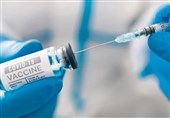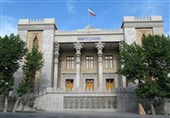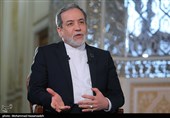Leaders Seek US$19bln to Arm World with COVID Weapons
TEHRAN (Tasnim) – World leaders united to demand US$19 billion (RM78 billion) of investment in weapons to beat the COVID-19 pandemic, saying the “miracle” of vaccines did not mean the end was in sight.
One year on from the launch of the Access to COVID Tools (ACT) Accelerator, a multi-billion-dollar internationally-coordinated attempt to find vaccines, tests and treatments, the billionth vaccine dose is on the verge of being administered.
But leaders warned that despite the progress so far, another push was needed to see off the pandemic, as variants of the virus stalk the planet and the disease takes off in India.
“We cannot allow the virus to run out of control across entire regions,” said French President Emmanuel Macron.
“The appearance of new variants demonstrated that our health also depends on the poorest countries.
“Much remains to be done.”
The ACT-Accelerator is seeking US$22 billion this year to further the assault on the pandemic, but is US$19 billion short.
“World leaders face a choice: invest in saving lives by treating the cause of the pandemic everywhere, now, or continue to spend trillions on the consequences with no end in sight,” said World Health Organization chief Tedros Adhanom Ghebreyesus.
“We can only end the pandemic by funding, sharing, and scaling-up access to the tools we need to fight the disease.”
At its launch 12 months ago, the pandemic was still in its infancy.
The death toll -- now more than three million — stood at around 190,000, while only 2.7 million people had been infected, compared to more than 144 million confirmed cases today.
The ACT launch gave birth to the Covax facility to ensure poorer countries could access eventual vaccines, fearing — with justification, as it turned out — a scramble for jabs.
Just 0.2 per cent of COVID-19 vaccine doses have been administered in the 29 lowest-income countries, home to nine per cent of the world’s population.
COVAX has so far shipped more than 40.5 million vaccine doses to 118 participating territories.
It is aiming to supply at least two billion vaccine doses this year, of which 1.3 billion will be for the 92 lowest-income participants, with the cost covered by donors.
“We achieved a miracle. Every cent that we put into the ACT-Accelerator has been a good investment,” said European Commission president Ursula von der Leyen, calling for countries to join forces as “Team Human”.
“The pandemic is far from over. We need ACT-Accelerator perhaps even more than one year ago, to track the virus as it evolves, to scale up manufacturing, to deliver vaccines to all corners of the world,” she said.
One of the key problems now is manufacturing doses on the unprecedented scale required -- and the supply chain constraints associated with it.
South African President Cyril Ramaphosa called for more countries to be able to produce their own vaccines, diagnostics and treatments through a temporary suspension of intellectual property rights.
“Africa lags behind in the manufacture of vital products,” added Rwandan President Paul Kagame.
On the ACT tests pillar, Francoise Vanni, communications director for the Global Fund financing organization for combating epidemics, said the testing rate in rich countries was currently about 80 times higher than elsewhere.
“This inequity is basically a global health risk for all of us,” she told reporters.
“We need to continue monitoring the virus among the vaccinated population,” she added, to keep track of what SARS-CoV-2 is up to.
Meanwhile on treatments, ACT supported 15 clinical trials, investigating 21 therapies in 47 countries, with 85,000 patients enrolled.
It supported research that identified dexamethasone as the first life-saving therapy for COVID-19 -- the only treatment for the disease approved by the WHO.
Philippe Duneton, the executive director of Unitaid, which works on innovations on major diseases and is co-leading ACT’s therapeutics arm, said the search was still on for a cure for COVID-19.
“To have a cure is absolutely feasible,” he told AFP.
“There is now more understanding of how this virus is working and potentially, my guess is yes, we will have a treatment — the question is when.”






